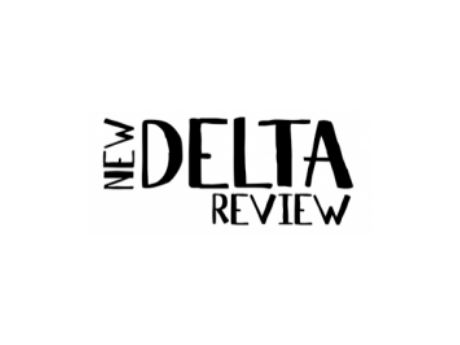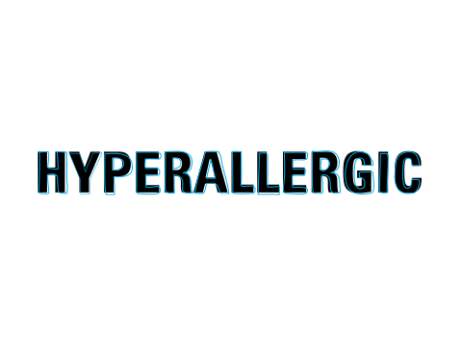Site Visits
Alyson Pomerantz on New Delta Review

Tell me about the creation of New Delta Review. When and how and why was it conceived?
New Delta Review was first published in 1984 by graduate students at Louisiana State University. We are almost thirty but, still, no gray hairs! If anything we've gotten younger, making the switch from print to online. Originally NDR—as those in the know refer to it—published many writers from the Delta region, but over time we have become less concerned with the point of origination of a piece, instead focusing on the quality of writing.
We're supervised by our amazing faculty advisor, the brilliant writer Jennifer Davis, but the journal is run by grad students and we finance ourselves. We see certain advantages to our set-up. The first is our energy. Each year brings in new staff, and the promotion of more experienced staff into positions with more responsibility. This energy combines with the power of previous years, turning our journal into a tripped-out, lithium-ion battery, crackling, exploding, corroding—no wait, not corroding, although strange things do happen in the Bayou (see, we have a sense of humor). Second, since we're engaging every day with our own writing in graduate school, we're critical readers, but also open to discovering new writers. Even though we're self-sustaining, we're fed by the larger writing community in our area, both within the LSU English Department and Baton Rouge. In this list, we include Delta Mouth, the ever-growing three-day literary festival in the spring, and two local reading series, The Underpass and Readers and Writers.
What makes NDR different from other places to read poetry (and literature) on the internet?
NDR approaches online publication with a view to maximize the strengths of the medium. Click on a piece of artwork, and it opens a door into a story, a video, a poem, an essay, or a mix of all these things. We're not trying to mimic an analog journal, and I think our interface speaks to this. For example, in our most recent issue (4.1, read it here) we published a new media piece called #cachemonet by Universalscene that involves collisions between two randomly generated arrays, which are composed of .gifs sourced from tumblr and set to music. Only on the Internet! Also, have you seen our cover art? Photos of the Nakagin Capsule Tower taken by Noritaka Minami invite the reader to explore the world's first capsule architecture in Tokyo.
We'd also encourage readers to visit our blog, which features contributions from all of our editors. These come in the shape of interviews, musings on craft and what it means to be a writer, book reviews and other journal news. It's a great way to get a sense of our collective voice and, hopefully, provide some entertainment for our readership in-between issues.
What is something that you have recently published that really excited you, and why?
In the last issue, we absolutely loved Anders Carlson-Wee's "Riding the Owl's Eye." The strength of this poem comes from not only the imagery but its honesty, when the speaker opens with tales of luck and averting crisis, such as "[t]he hobos / that could have pulled a switchblade and opened me / like a flood enfolding the red North Dakota clay," but then questions humanity's misplaced focus about what is important. Our poetry editor from last year, Sarah Hulyk Maxwell, speculates that the honesty in our poems has something to do with the selection process, one that is open and inclusive. The staff all agrees if someone isn't willing to fight for a poem in a mud wrestling or thumb-war kind of way, it isn't NDR-worthy.
In general, we accept poetry when a poem creates a simultaneous chorus of YES! among the poetry staff. While reasons are articulated, it's often the kind of "yes" that doesn't need to be validated with high rhetoric. Our current poetry editor, Danielle Lea Buchanan, says that "to get three human beings with separate isolated past experiences, genetics, biology, blood types and cognitive patterns to all say yes to a poem is indeed a revelatory moment."
We also have an annual chapbook contest in which we publish a manuscript of fiction, poetry or a hybrid work. This gives us an opportunity to support writers in a longer format, which literary journals don't often have the chance to do. Our judge this year is Mark Yakich of Loyola, who just wrote a thoughtful piece about what a poem is, published in The Atlantic.
What should someone submitting work to NDR know about the site?
One of the best features of NDR is that we are online and free to all readers. This means that if you are published in our journal, anyone can find you! And that's what it's about, isn't it, getting more eyeballs on the work that you've painstakingly created? This also gives writers an opportunity to see what we've published before. We've all heard the warnings from editors to please review the work of the journal before submitting: our format lets you do that, no problem.
Also, here's where to submit. We welcome submissions online, all the time.
We always accept poetry, fiction, and creative nonfiction, but we're particularly open to pieces that use our interface to blow up the traditional writing format.
What other literary sites and journals, online or print, are your go-to?
Our staff weighs in, in no particular order (Ed.'s Note: It was hard to cut them off): The Southern Review, The Paris Review, Oxford American, Lana Turner, One Story, Missouri Review (especially their innovative online content), McSweeney's, Copper Nickel, Gulf Coast, New Orleans Review, Bayou Magazine, The Pinch, A Public Space, Hayden's Ferry Review, Ninth Letter, Two Serious Ladies, Black Warrior Review, Noon, Lucky Peach, Claudius App, Tin House, and Shampoo.
* * *
Alyson Pomerantz is the Editor of New Delta Review. She is a writer, lawyer, and graduate student (sometimes, all at once!) living in Baton Rouge, Louisiana.


